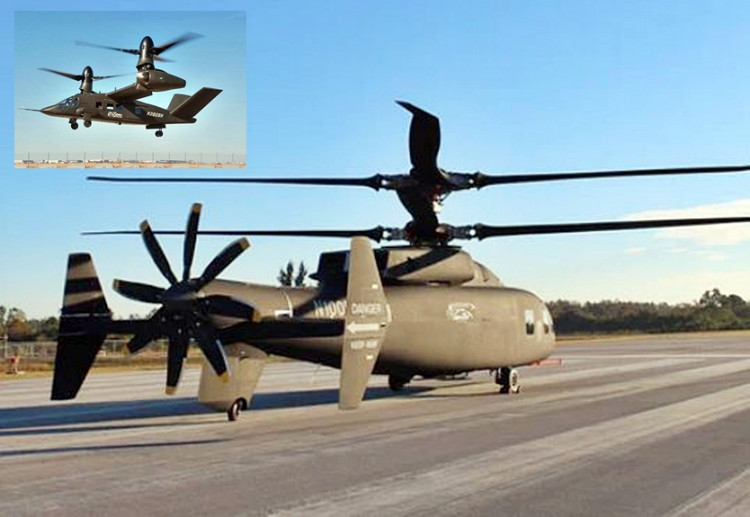The Sikorsky-Boeing SB>1 Defiant, one of two aircraft designs competing in the U.S. Army's Joint Multi-Role-Medium Technology Demonstrator Program, will finally get to fly sometime this year.
The first flyable prototype of the SB>1 Defiant made its appearance towards the end of 2018. Along with the first sighting of this new helicopter was the announcement the Defiant's first flight will be postponed to 2019 following a technical issue discovered during ground tests.
The addition of a pusher propeller at the rear allows the SB>1 Defiant to fly twice as fast and twice as far as today's conventional helicopters. It is the fastest helicopter ever developed.
Defiant is a compound helicopter with counter-rotating coaxial main rotors and a pusher propeller. The demonstrator aircraft derives its power from two Honeywell T55 turboshaft engines. Defiant will have a cruising speed of 250 knots or 460 km/h using these engines.
The main rotors and pusher propeller generate a 185 km/h increase in speed; extend combat radius by 60% and performs 50% better in high-hot hover performance. Later on, the Defiant will fly faster with a new engine, the Future Affordable Turbine Engine (FATE). Apart from a speed boost, the engine will also increase the Defiant's range to 424 km.
These technical attributes combine to make Defiant quick and agile. Defiant will be capable of fast acceleration and deceleration and swift side-to-side movement. It can also hover with the tail up and nose down.
Data from the Defiant test flights will help the Army develop its final specs for new utility helicopters expected to enter service in the early 2030s. The Army's Joint Multi-Role-Medium Technology Demonstrator Program is part of the overarching Future Vertical Lift (FVL) program to develop a family of military helicopters for the United States Armed Forces.
FVL will replace the Army's Sikorsky UH-60 Black Hawk utility helicopters; Boeing AH-64 Apache attack helicopters; Boeing CH-47 Chinook heavy-lift helicopters and Bell OH-58 Kiowa reconnaissance helicopters.
Five different types of aircraft are to be developed under the FVL program. These aircraft will share common hardware such as sensors, avionics, engines, and countermeasures.
On the other hand, the Defiant's competitor, the Bell V-280 Valor tilt-rotor aircraft, made its first flight on Dec. 18, 2017, in Amarillo, Texas. It has a cruising speed of 280 knots or 520 km/h (hence the name V-280), and a top speed of 300 knots or 560 km/h.
Bell unveiled a full-scale mock-up of the V-280 Valor in 2014. The V-280 handles much like a helicopter in low-speed agility. Bell claims its product offers unprecedented pitch, roll, and yaw response for military operations. The V-280 is designed to travel twice as fast and twice as far as the Black Hawk.






